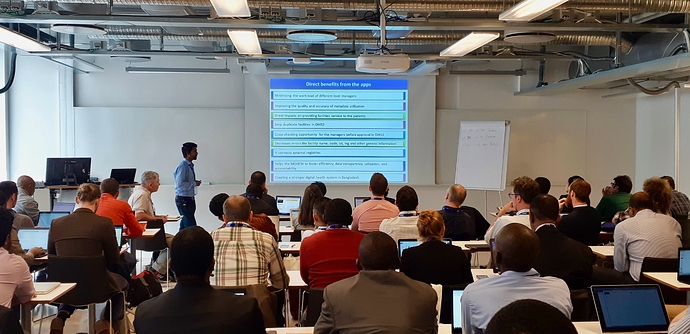Bangladesh is making huge strides in curbing child mortality rates! The Bangladesh National Health Care System holds maternal, neonatal and child health (MNCH) as one of its biggest focuses. Between 1990 and 2015, the maternal mortality ratio (MMR) and under-5 mortality ratio (U5MR) in Bangladesh fell by an impressive 69.1% and 73% respectively reports ‘Trends in maternal mortality: Estimates by WHO, UNICEF, UNFPA, World Bank and the United Nations Populations Division’. DHIS2 is being used in tracking the availability and collecting data of priority MNCH medicines across different health facilities has played a crucial role in this impressive achievement.
Since the implementation of the DHIS2 based elMIS in 14 districts working with around 3000 facilities, the government and other stakeholders are now able to successfully track various variants such as national level stock, nearest of expiry medicines, quantity of expired medicines, number of days stock out within our facilities and data monitoring. Due to the efficiency of the system, the performance rate has increased to 97% compared to the previous 70% which the stakeholders consider to be remarkable improvement.
With the system in place, the government can now take necessary steps for stock out facilities and ensure the availability of these lifesaving medicines. Now, the government is planning to procure MNCH medicines based on the data made available from the system in a timely manner and ensure the availability of the medicines using this platform to help minimize maternal, newborn and child health mortality.
This project was funded by USAID as a Systems for Improved Access to Pharmaceuticals and Services (SIAPS) project.
User story shared by Julhas Sujan. See a previous post about his work with DHIS2 here: DHIS2 and e-TB Manager Interoperability: Creating a Stronger Digital Health System in Bangladesh

